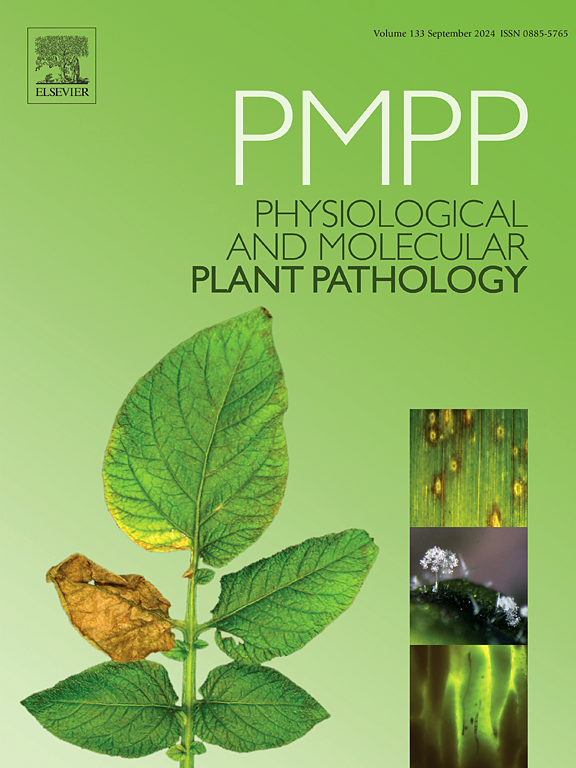A rapid and visual detection method for Alternaria alternata, the causal agent of leaf spot disease on yam, based on RPA-CRISPR/Cas12a
IF 2.8
3区 农林科学
Q2 PLANT SCIENCES
引用次数: 0
Abstract
Yam (Dioscorea opposita Thunb.) is an important crop that is highly valuable as both food and medicine in China. However, fungal diseases pose a significant threat to the safety and reliability of its production. In this study, a strain designated 23HNTG4-2 was isolated and shown to play predominant role in the occurrence of leaf spot disease on D. opposita. Its pathogenicity was determined based on Koch's postulates. Further analysis based on a multigene phylogenetic tree identified the 23HNTG4-2 as Alternaria alternata. Considering that the traditional methods for detecting pathogens are often time-consuming, we developed a platform based on RPA-CRISPR/Cas12a to detect A. alternata. Our research revealed that the CRISPR RNA (crRNA) that contained two bases (Al-crRNA3) of the protospacer adjacent motif (PAM) site exhibited a maximum fluorescence value (1.37 ± 0.052) during the CRISPR/Cas12a reaction. Compared with PCR and qPCR assays, this platform was much more sensitive (3 × 101 copies/μL) and enhanced the reliability of the detection results. The platform can be utilized in field tests without the need for intricate instruments. In summary, we verified that A. alternata produces necrotic spots on the yam leaves and provided an RPA-CRISPR/Cas12a detection platform, which is suitable for field tests owing to significant advances in sensitivity and specificity, visible results, and its lack of reliance on complicated instruments.

求助全文
约1分钟内获得全文
求助全文
来源期刊
CiteScore
4.30
自引率
7.40%
发文量
130
审稿时长
38 days
期刊介绍:
Physiological and Molecular Plant Pathology provides an International forum for original research papers, reviews, and commentaries on all aspects of the molecular biology, biochemistry, physiology, histology and cytology, genetics and evolution of plant-microbe interactions.
Papers on all kinds of infective pathogen, including viruses, prokaryotes, fungi, and nematodes, as well as mutualistic organisms such as Rhizobium and mycorrhyzal fungi, are acceptable as long as they have a bearing on the interaction between pathogen and plant.

 求助内容:
求助内容: 应助结果提醒方式:
应助结果提醒方式:


